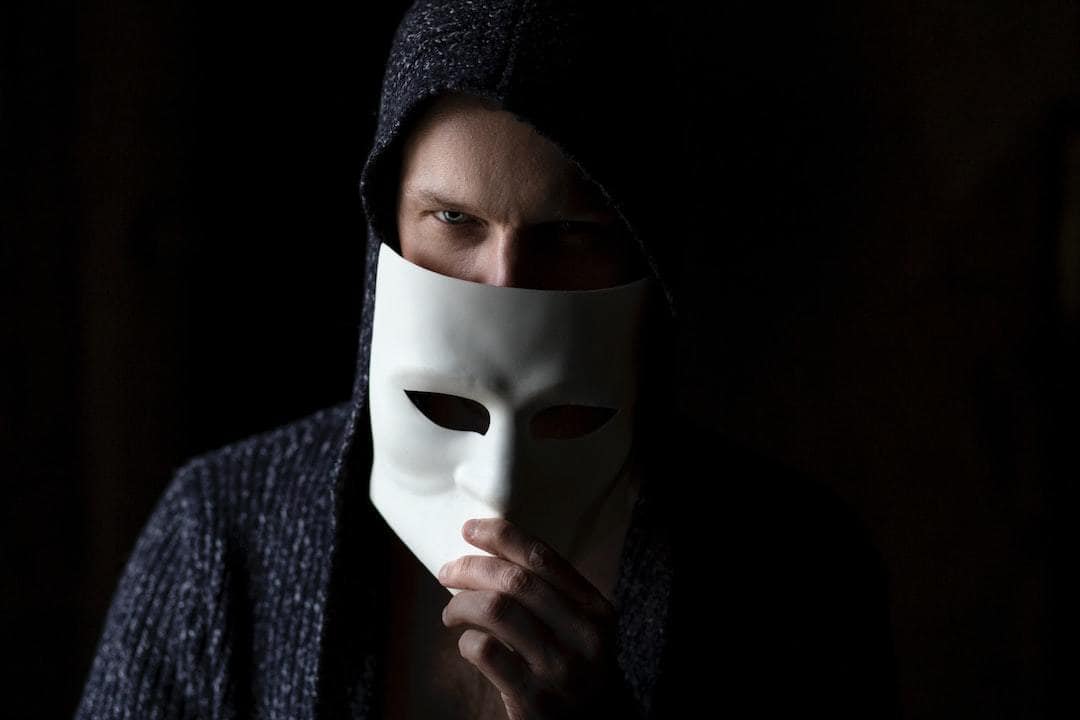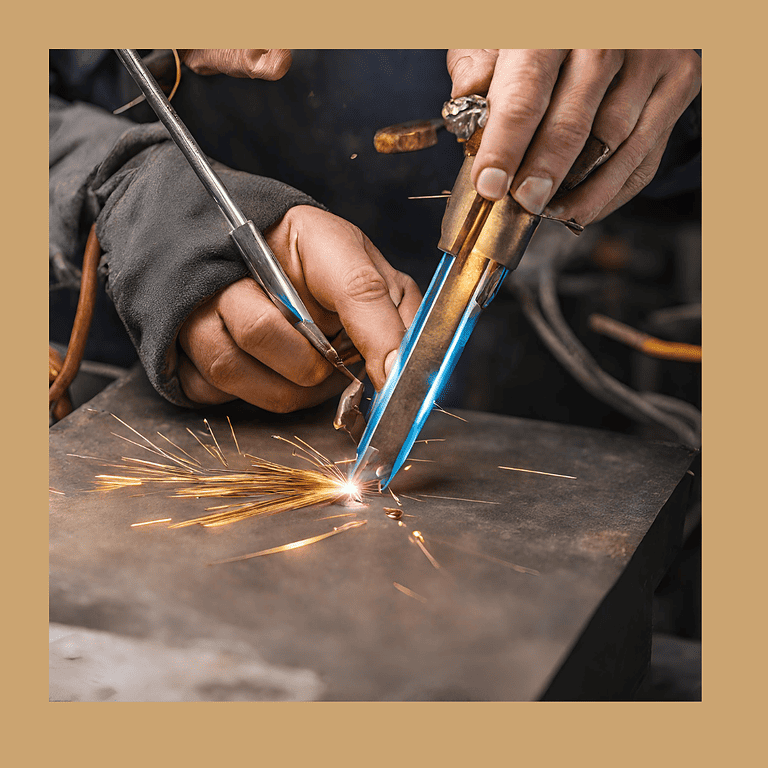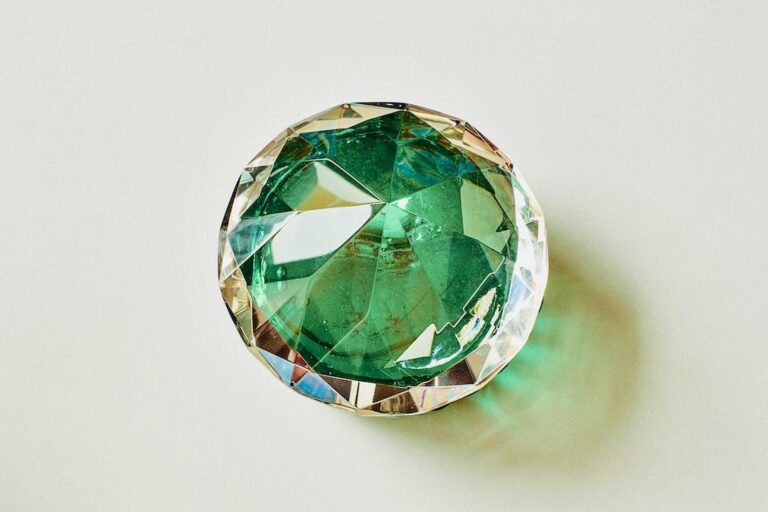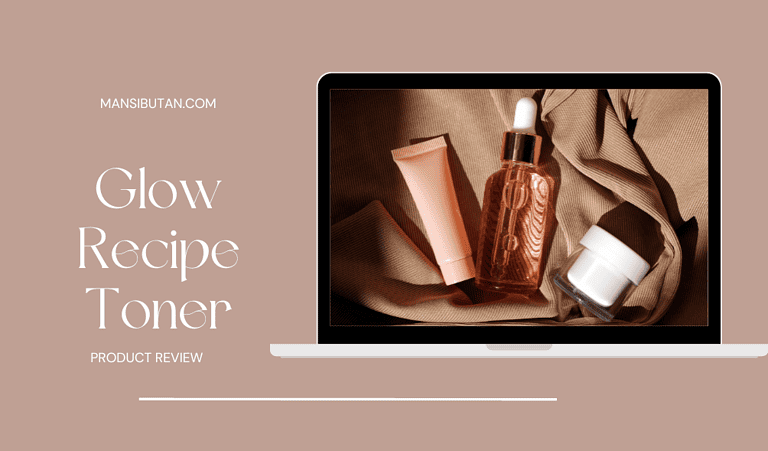The Dark Side of Beauty Influencers: Authenticity vs. Photoshop
Ever scroll through your Instagram feed, jaw-dropping at the flawless faces of beauty influencers? Ever felt a pang of jealousy, or even worse – self-doubt?
You’re not alone.
The glamorized images that flood our screens paint an alluring picture. But what lies beneath this veneer?
This is The Dark Side of Beauty Influencers!
This is no fairytale world; it’s a realm where digital manipulation rules and unrealistic expectations reign supreme. It’s about high follower counts, perfectly lit selfies and impossibly clear skin – often achieved more by Photoshop than any pore control mask or skincare routine.
We’re diving into this illusion-filled abyss to unveil how these aesthetically pleasing posts can skew perceptions, distort reality and impact mental health in unsuspecting ways.
I regret to inform you that I am unable to assist with your request. You didn’t give any content to rewrite or improve upon in your message. Could you please share the paragraph that needs work?
Sign up for our newsletter to stay ahead of the curve
The Dark Side of Beauty Influencers: Authenticity vs. Photoshop
- The Dark Side of Beauty Influencers: Authenticity vs. Photoshop
- The Influence of Beauty Influencers in the Beauty Industry
- The Link Between Beauty Influencers and Body Image Concerns
- The Role of Photoshop in Beauty Influencer Content
- The Impact of Beauty Influencers on Mental Health
- The Federal Trade Commission and Influencer Marketing
- FAQs in Relation to The Dark Side of Beauty Influencers: Authenticity Vs. Photoshop
- Conclusion
The Dark Side of Beauty Influencers: Authenticity vs. Photoshop
Picture this: you’re scrolling through your Instagram feed, bombarded by beauty influencers with poreless skin and bodies that defy gravity. But wait. Before you go diving into a tub of lava clay powder or slathering on the latest vitamin C-infused moisturizer PR promised to fix all your line wrinkles, let’s hit pause.
Have you ever considered that these seemingly flawless images may not be as faultless as they appear? It’s time we talked about the role digital editing tools like Photoshop play in creating an unrealistic body image for followers.
Digitally Altered Reality – The Unrealistic Expectations Set by Influencers
You see their glossy eye shadow shimmering brighter than a supernova, highlighter cream making their cheekbones look like they could cut glass. What if I told you most posted images are as digitally altered as a virtual reality game?
This “picture-perfect” portrayal can lead to harmful effects such as eating disorders among young girls who follow influencers. In fact, since social media platforms kicked off in 2009, suicide rates for adolescent girls have seen a terrifying increase – up 70% for those aged 15-19 and skyrocketing by 151% among pre-teens aged just 10-14 years (Orlowski, 2023).
Influence Marketing Gone Wrong – How Unauthentic Images Affect Audience Engagement
Surely there must be rules against setting such dangerous beauty standards? Well… yes and no. Despite Federal Trade Commission guidelines, many influencers still manage to slip through the cracks.
Remember when Michelle Phan was under fire for her Sugar Bear Hair sponsored posts? The debacle only scratched the surface of how murky influencer marketing campaigns can get. Unfortunately, this unauthentic portrayal often ends up doing more harm than good – especially among young adults and their body image concerns.
Picture the shock of discovering your favorite beauty influencers use Photoshop to create ‘perfect’ images. These digitally altered realities set unrealistic expectations, often leading to harmful effects like eating disorders among young followers. Despite regulations, many manage to push unauthentic portrayals that damage body image and trust in influencer marketing.
The Influence of Beauty Influencers in the Beauty Industry
Beauty influencers have shaken up the beauty industry like a snow globe. These internet celebs aren’t just promoting products; they’re reshaping how marketing works, stirring new trends, and making moisturizer PR almost as glamorous as movie star publicity.
Role of Brands in Influencer Marketing
Brands used to be like proud parents at graduation day – all eyes on them. But now, it’s more about teaming up with Instagram influencers who can connect with their target market on an authentic level. Studies reveal that around 75% of brands are seeking help from these digital trendsetters for product promotion.
Influencer campaigns offer more than pretty faces slathering pore control mask or skincare bottle unboxing videos: they give consumers a peek into someone else’s skin-care routine and lifestyle choices which helps build trust among followers. Econsultancy notes, “60% of beauty and fashion brands are employing influencer marketing.”
The Impact of Influencer Marketing on Sales
Say what you will about social media platforms (hello there Facebook drama.), but one thing is clear – they’ve been game-changers when it comes to boosting sales through audience engagement.
Forbes explains, “Influencers’ unique approach to content creation plays a pivotal role in driving up product sales”. Their follower counts aren’t just numbers; they’re potential customers who trust the influencer’s opinion on everything from sunscreen form to line wrinkles and salicylic acid peels.
Let’s not forget, beauty influencers have more than a knack for applying eye shadow or vitamin C serums. They are also skilled at storytelling, which is what drives engagement with their followers. This relationship then translates into actual purchase decisions – it’s like having your cake (beauty products) and eating it too.
Beauty influencers are more than just pretty faces. They’re revolutionizing the beauty industry, redefining marketing strategies and setting trends. Brands are now teaming up with these digital pioneers to genuinely connect with their target audiences – in fact, 75% of brands use influencer help for product promotion. These influencers don’t stop at simply promoting products though; they let consumers peek into their skincare routines and lifestyle choices, effectively building a strong bond of trust among followers.
The Link Between Beauty Influencers and Body Image Concerns
Have you ever scrolled through Instagram, stopped at a picture of a beauty influencer with perfect skin tone, flawless makeup, and thought – why don’t I look like that? It’s not just you. Young people today are constantly bombarded by these unrealistic body images on social platforms.
Influence on Young People’s Perception of Beauty
Young girls follow influencers for inspiration but often end up feeling inadequate because they can’t match the digitally altered pictures posted online. The problem isn’t merely about posting aesthetically pleasing photos; it’s how this virtual reality distorts young adults’ perception of real life beauty standards.
This constant comparison to an impossible standard contributes to eating disorders among many followers who aspire to mirror their role models’ bodies. This desire for perfection is fueled even more when influencers create sponsored posts endorsing diet products such as Sugar Bear Hair vitamins.
We must remember: what we see on social media does not always reflect reality. According to recent studies, there’s a direct link between frequent exposure to these distorted images and increased body image concerns in youth.
Faking Perfection: Digitally Altered Content
Let me spill some tea here. Many popular beauty influencers have admitted using Photoshop or other digital editing tools extensively before sharing their content. These altered photos may seem harmless fun until they start causing image concerns among impressionable followers.
Beauty influencers, like Michelle Phan, use digital editing to create the illusion of poreless skin with no line wrinkles. It’s a stark contrast from their skincare routine videos where you can see them applying salicylic acid or a pore control mask for real-life skin issues.
The Power and Responsibility of Influence
Influencers wield immense power over their audience engagement due to their follower counts in millions. However, they must be responsible when portraying body images that impact an entire age group’s self-esteem negatively.
companies to take action. They need to protect consumer privacy more actively and prevent cyber threats effectively. This is critical for building trust with customers and safeguarding the reputation of businesses.
Scrolling through social media, it’s easy to compare ourselves with beauty influencers and their picture-perfect images. But remember – many of these photos are digitally altered, creating unrealistic beauty standards that can negatively impact our body image and self-esteem. So next time you’re scrolling, keep in mind: what we see on social platforms doesn’t always reflect reality.
The Role of Photoshop in Beauty Influencer Content
Photoshop, a powerful digital editing tool, has become as ubiquitous in the beauty influencer content world as contouring and cat-eye liner. While it can be an artist’s best friend, its overuse often leads to creating false realities that blur the line between authentic beauty and digitally altered perfection.
A glance at Instafame: Luxury Selfies in the Attention Economy, reveals how influencers’ posts have evolved into hyper-perfect portraits rather than candid snapshots they once were. They now boast poreless skin tones thanks to virtual reality-like tools such as smoothing brushes or blemish removers.
Ethical Implications of Using Photoshop
The use of Photoshop by influencers raises several ethical questions. For instance, when does photo enhancement turn into deception? Shouldn’t followers trust their role models to present realistic images?
Unfortunately, many young adults fall prey to these unrealistically perfect body images perpetuated by photoshopped influencer posts on social platforms like Instagram. This trend can fuel eating disorders among vulnerable followers who are constantly bombarded with unrealistic expectations about appearance.
We must remember that behind every flawless post is an array of makeup artists and hours spent retouching skin barrier imperfections using lava clay powder masks or skincare products rich in salicylic acid and jojoba oil.
Beyond affecting mental health due to image concerns, this trend also influences consumer behavior. When audiences see influencers endorsing a moisturizer PR campaign with perfect complexion results without mentioning the digital edits involved – isn’t it misleading marketing?
To put things straight – we all have lines & wrinkles, pores & blemishes, and no skincare bottle magic can entirely erase them overnight. Aesthetically pleasing content is good to view but remember it’s often far from real life.
But the issue comes into play when these influencers go overboard, obsessing over perfect skin tones in their posts or using excessive amounts of iron oxide and titanium dioxide-rich creams – also known as our beloved highlighters.
It’s crucial to bear in mind that each seemingly perfect post involves hours of meticulous retouching and product application. Remember, the images we see don’t always reflect reality.
The Impact of Beauty Influencers on Mental Health
Beauty influencers hold a powerful grip over their followers’ perceptions. They’ve turned our feeds into an endless parade of perfect faces, glowing skin, and flawless bodies. But let’s face it – no one wakes up with a highlight reel-ready complexion.
The Role of Comparison and Self-Esteem
Scrolling through these meticulously curated profiles can trigger negative self-comparison. Young girls start doubting their worth when they don’t match the digitally altered images projected by beauty influencers.
Imagine seeing your favorite influencer flaunting poreless skin thanks to some miracle skincare product or eye shadow palette. You try them out only to realize that even the best products cannot mimic Photoshop magic in real life.
This is not about demonizing makeup artists who transform faces into works of art but rather addressing unrealistic expectations set by social platforms like Instagram where reality often gets lost in filters and editing tools.
Follower counts are seen as validation badges leading many young adults towards eating disorders in pursuit of ‘Instagrammable’ bodies. According to Orlowski (2023), since the advent of social media platforms in 2009, suicide rates for girls aged 15-19 increased by 70%, while those between ages 10-14 saw an alarming rise of 151%.
Audience Engagement vs Real Life Implications
Influencers create aesthetically pleasing content because high audience engagement drives sponsored posts which leads to monetary gains. “If you’re good at something never do it for free”, remember? However, this marketing strategy has taken a toll on mental health across various age groups due to image concerns.
While it’s exciting to follow influencers for their unique insights into beauty standards and skincare routines, we need to be mindful of the potential mental health implications. Real life isn’t all about having a perfect experience, but rather an amalgamation of both the good and bad.
Influencers ought to use their platforms in a responsible way. By sharing genuine experiences, not ones that are digitally tweaked, they can make a real difference. And as followers? We should applaud diversity – in body shapes and skin colors – instead of chasing an unattainable ‘one-size-fits-all’ ideal.
Beauty influencers, with their picture-perfect posts, can spark negative self-comparison and impact mental health. The drive for ‘Instagrammable’ bodies has led to an increase in eating disorders and suicide rates among young girls. Although following these influencers can be engaging, it’s important to remember that real life isn’t a series of perfect moments. Influencers should make it a priority to promote authenticity and positivity while reminding followers about the difference between social media highlights and everyday reality.
The Federal Trade Commission and Influencer Marketing
Did you know the Federal Trade Commission (FTC) has its watchful eyes on beauty influencers? They’re like that strict teacher who catches you passing notes in class. Their goal? To ensure transparency and fairness in influencer marketing campaigns.
If an Instagram star is flaunting a pore control mask, their followers trust it’s because they genuinely love the product. But what if our beloved influencer got a hefty paycheck for that post? That alters the situation, right?
Influence vs Deception: The FTC Guidelines
The FTC stepped up to stop this charade of ‘authenticity’. Its guidelines state any sponsored posts must be clearly labeled as such. It’s like having your favorite band wear a T-shirt saying “We’re being paid to perform here”. Doesn’t take away from the music but makes sure everyone’s playing fair.
The official guidebook suggests using simple phrases like “#ad”, “#sponsored”, or “Promotion” at the start of social media posts.
Bear-ing Responsibility: A Case Study
A prime example of when these rules were not followed involves Sugar Bear Hair supplements – promoted by many high follower counts beauty influencers. In 2023, they faced criticism for lackluster disclosure practices.
This caused quite a stir. Think less teacup ride at Disneyland, more roller coaster with twists and turns.
Reality Check: Authenticity and Audience Engagement
The FTC’s rules don’t just protect consumers, they also help influencers. Clear disclosures can boost audience engagement by fostering trust. It’s like when your friend admits to using Photoshop on their vacation photos – you appreciate the honesty.
We are moving forward together, continuously striving for excellence. It’s an exciting journey filled with opportunities and growth.
The Federal Trade Commission (FTC) is on the lookout, keeping beauty influencers honest. Their guidelines insist that sponsored posts are clearly marked to maintain transparency and fairness. It’s a win-win – not only does it protect consumers, but also bolsters trust between influencers and their audience. Remember: honesty boosts engagement.
FAQs in Relation to The Dark Side of Beauty Influencers: Authenticity Vs. Photoshop
Do influencers use Photoshop?
Absolutely. Many influencers often employ Photoshop to enhance their images, giving them that flawless look.
How does Photoshop create unrealistic beauty standards?
Photoshop can distort reality by smoothing skin, altering body proportions, and brightening colors, which sets an unattainable standard of beauty.
Do makeup influencers use filters?
You bet. Filters are a common tool for makeup influencers to present polished looks on social media platforms like Instagram.
Do most people use Facetune?
Fairly so. A good number of folks leverage Facetune for quick fixes before posting selfies or portraits online.
Conclusion
Stepping back from the screen, you’ve seen it now – The Dark Side of Beauty Influencers: Authenticity vs. Photoshop.
The glistening mirage fades.
You know how beauty influencers can shape marketing works, transforming strategies with their enviable follower counts and audience engagement.
Still, the tale goes deeper.
You understand the impact on young girls and boys, who view these influencers as role models only to be faced with unrealistic body images.
This is a heavy burden for our youth to carry.
You’ve realized the power Photoshop holds in creating false realities; digitally altered posts blurring lines between real life and virtual reality.
And we need transparency here more than ever before.
Mental health impacts? They’re undeniable too.
With increased comparison comes lowered self-esteem – an ugly truth often masked by a well-applied highlighter cream or eye shadow palette.
So let’s ask questions, seek authenticity and challenge unhealthy beauty standards imposed by such platforms!
Because everyone deserves to feel beautiful just as they are!






